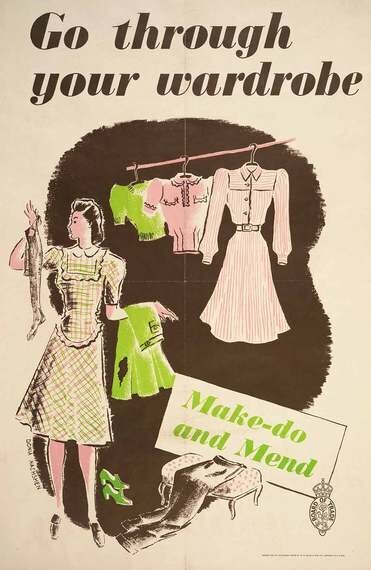We're living in cookie cutter times. We all wear the same clothes, mass-produced for the same stores, we drive samey-samey, personality-free cars and are we're slaves to our smartphones that are virtually identical in terms of functionality and aesthetic. Very little is unique anymore. Restore to factory settings.
Choosing Cath Kidston et al, or our favourite band tee (from Primark, natch) might allow us to feel like we're expressing ourselves but the reality is that every High Street in the UK looks and feels the same. Drop you in blindfolded and you could be anywhere. We're all consuming the same goods. Individuality is in short supply. It's understandable that in these circumstances, our need to express our creativity and personalities can be overwhelming.
The cool kids are shunning the bland ambiguity, and are embracing recycling and up-cycling as a fashion led way to express their individuality, whilst appealing to their social conscious.

Not only does making good and mend - refashioning what's already in existence - fulfil us creatively, it's also economically, socially and environmentally beneficial. In 2012 almost 14.3million tons of textiles were send to landfills. Huge deliveries of used fabrics and clothes are shipped to developing countries, inundating them with cheap and often unnecessary textiles that stifle emerging local economic development in textiles. It is certainly far more eco-friendly on a many number of levels, to give your existing wardrobe a bespoke makeover than to commit to the bin or charity shop without a second thought.
Make Do and Mend obviously isn't a new concept. It was a pamphlet issued by the British Ministry of Information in the midst of WW2, to provide housewives with useful tips on how to be both frugal and stylish in times of harsh rationing. With its thrifty design ideas and advice on reusing old clothing, the pamphlet was an indispensable guide for households. Readers were advised to create pretty 'decorative patches' to cover holes in warn garments; unpick old jumpers to re-knit chic alternatives; turn men's clothes into women's; as well as darn, alter and protect against the 'moth menace'. An updated version of the book was recently released to coincide with the economic recession, offering similar frugal advice for 21st Century families.
In our throwaway society, with cheap, pretty tee-shirts that cost less than a loaf of bread, we're so far removed from the challenges faced by our war time sisters in terms of looking polished and fashionable, however that doesn't mean that we shouldn't employ their tenacity for looking good on a budget. We may ask ourselves why we'd upgrade or mend a frock when you can simply chuck it away and buy a new one as you do your weekly food shop. Particularly as we all lead such busy, stressful, time poor lives. But as consumers are realising the devastating effects of fast fashion they are beginning to look for innovative ways to change their wardrobe, and express their individuality. Upcycled apparel can be a part of this revolution - helping people make meaningful choices with their clothing.
